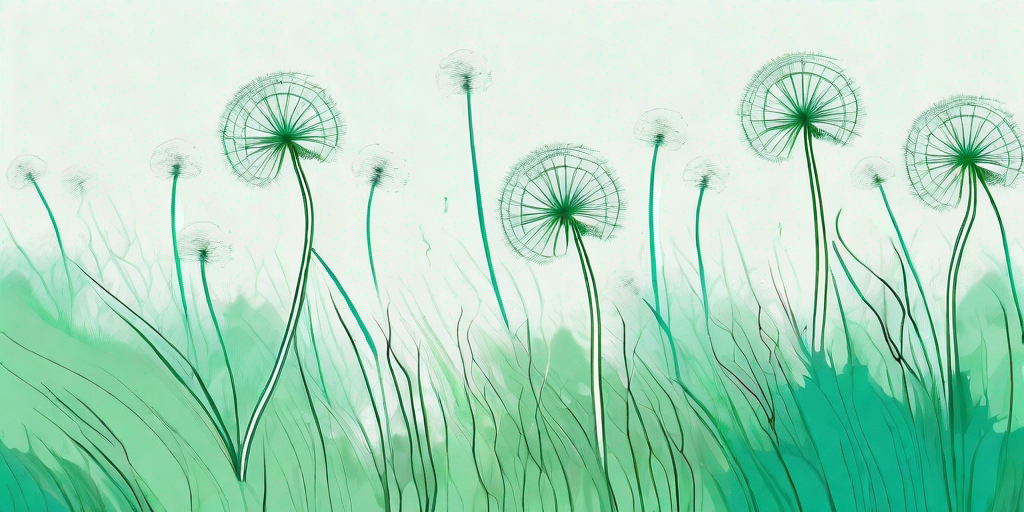
Dandelions: those little yellow invaders that seem to pop up overnight and take over your once pristine lawn. While they may look pretty to some, for the proud lawn owner, they're nothing short of a nightmare. But fear not, dear reader. There is a way to reclaim your lawn and banish those pesky dandelions for good. So, grab your gardening gloves, your sense of humor, and let's dive in.
Understanding the Enemy: The Dandelion
Before we go into battle, it's important to know what we're up against. The dandelion, or Taraxacum officinale, if you want to get fancy, is a perennial weed that's known for its bright yellow flowers and fluffy seed heads. It's a hardy little thing, able to grow in a variety of conditions and soil types.
One of the reasons dandelions are so hard to get rid of is because of their deep taproot system. This allows them to survive in dry conditions and makes them resistant to many common weed killers. Plus, each dandelion can produce up to 2,000 seeds, which can spread and germinate quickly, creating a dandelion army in no time.
The Lifecycle of a Dandelion
Dandelions have a pretty straightforward lifecycle. They sprout, flower, produce seeds, and then die. But, they do this very quickly and can go from sprout to seed in just a few weeks. This rapid lifecycle is one of the reasons they're so hard to control.
Once a dandelion has flowered and produced seeds, those seeds can be carried by the wind and spread over a large area. This is why you can go from having a few dandelions to a lawn full of them in a short amount of time.
The Battle Plan: How to Get Rid of Dandelions
Now that we know what we're up against, it's time to formulate a plan. There are several methods for getting rid of dandelions, ranging from manual removal to chemical treatments. The best method for you will depend on the severity of your dandelion problem and your personal preferences.
Remember, the key to winning the war against dandelions is persistence. These little guys are tough and it's going to take more than one attempt to get rid of them for good. But with a little patience and a lot of determination, you can reclaim your lawn.
Manual Removal
The most straightforward method for getting rid of dandelions is simply to pull them out by hand. This can be a bit labor-intensive, but it's also the most eco-friendly option. Plus, there's something satisfying about yanking those little invaders out of your lawn.
When pulling dandelions, it's important to get as much of the root as possible. If you leave any part of the root behind, the dandelion can regrow. There are special tools available that can help you get deep enough to remove the entire root.
Chemical Treatments
If manual removal sounds like too much work, or if your dandelion problem is too severe for pulling to be effective, you may want to consider using a chemical weed killer. These products work by targeting the dandelion's root system, killing the plant from the bottom up.
When using a chemical weed killer, it's important to follow the manufacturer's instructions carefully. These products can be harmful if not used correctly, so always wear protective clothing and keep pets and children away from the treated area.
Maintaining a Dandelion-Free Lawn
Once you've gotten rid of the dandelions, the next step is to keep them from coming back. This involves regular lawn maintenance and a few preventative measures.
First, make sure to mow your lawn regularly. This can help prevent dandelions from flowering and spreading their seeds. Plus, a well-maintained lawn is less likely to have dandelions in the first place.
Second, consider using a pre-emergent herbicide in the early spring. This can help prevent dandelion seeds from germinating and taking over your lawn.
Healthy Lawn, Happy Home
Finally, remember that a healthy lawn is the best defense against dandelions. This means watering regularly, fertilizing as needed, and aerating your lawn to promote healthy root growth.
With a little time and effort, you can have a lush, green lawn that's free of dandelions. So, say goodbye to those pesky yellow invaders and hello to a beautiful, weed-free lawn.
FAQs
Why are dandelions so hard to get rid of?
Dandelions are tough little plants. They have a deep taproot system that makes them resistant to many common weed killers. Plus, each dandelion can produce up to 2,000 seeds, which can spread and germinate quickly.
What's the best way to get rid of dandelions?
The best method for getting rid of dandelions depends on the severity of your dandelion problem and your personal preferences. Manual removal can be effective for small infestations, while chemical treatments may be necessary for larger problems.
How can I prevent dandelions from coming back?
Regular lawn maintenance and the use of a pre-emergent herbicide can help prevent dandelions from coming back. A healthy lawn is the best defense against dandelions.
Conclusion
While dandelions can be a nuisance, they're not unbeatable. With the right knowledge and tools, you can rid your lawn of these pesky weeds and enjoy a lush, green lawn all season long. So, roll up your sleeves, put on your gardening gloves, and get ready to say goodbye to those pesky dandelions once and for all.











